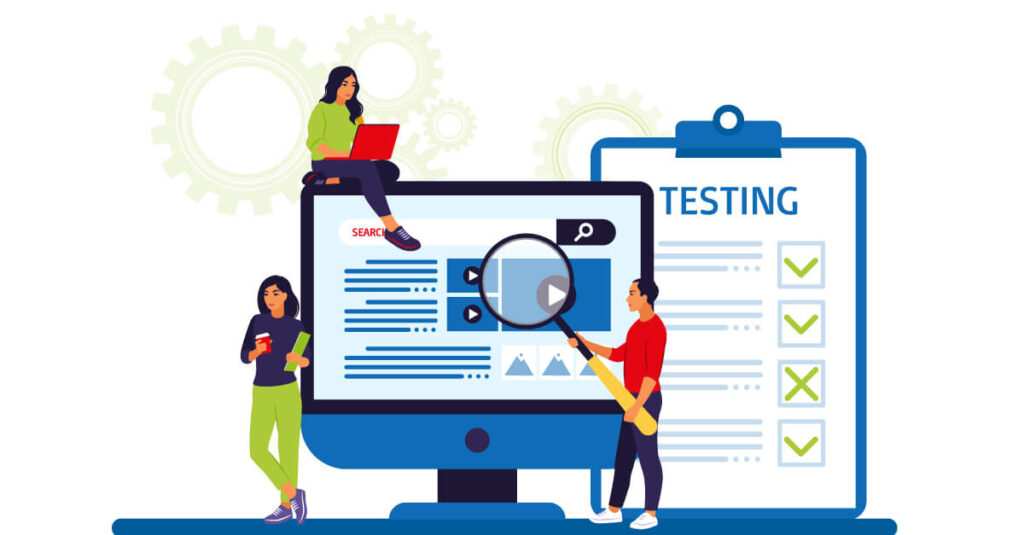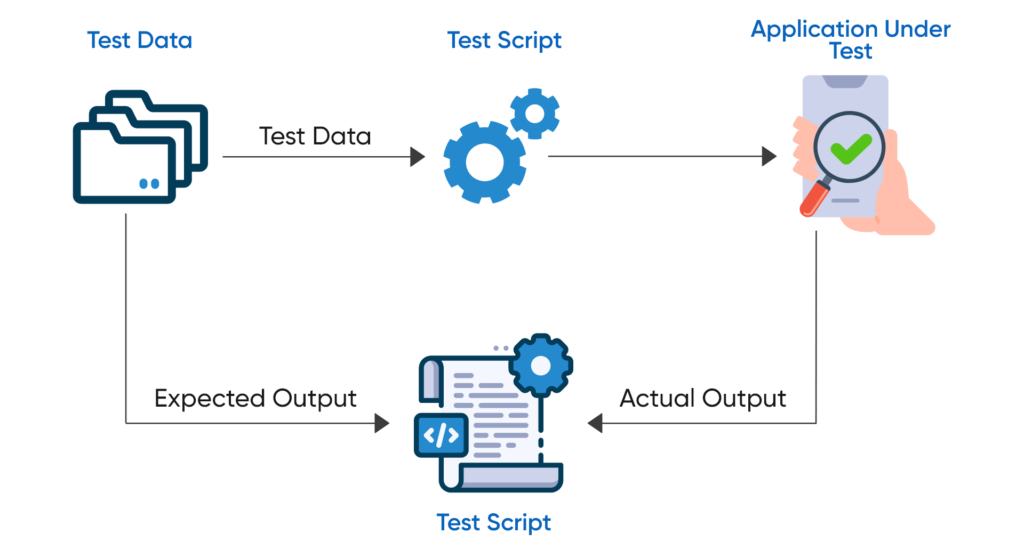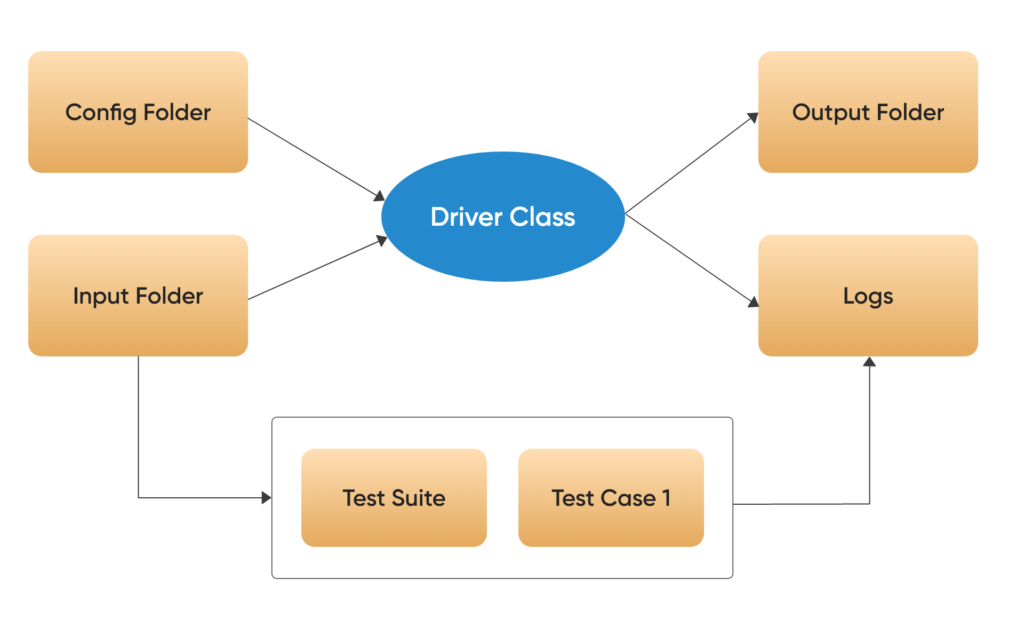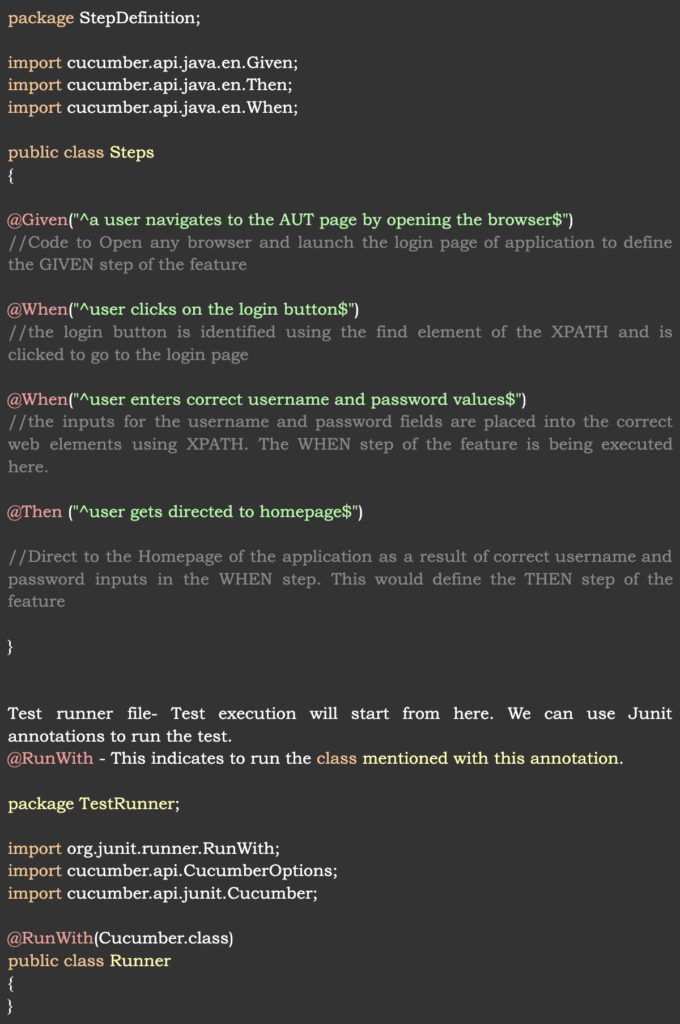Test Automation Frameworks and Their Types

An automation testing framework is the most crucial component of software testing. Framework makes it very easy to design test cases and maintain them. Using testing frameworks has many benefits, and we are going to learn about them and also how to use frameworks.
What is a Test Framework?
Automation testing frameworks are a set of rules, tools, and standards. Test automation can become very efficient using these standards. These frameworks can integrate many tools to serve the purpose of the user.
For example, if we take selenium, then we can integrate TestNg; if the user uses TestNg for test case execution, then an HTML report will generate by default, which contains all the necessary information like the result of the test cases and the console logs which can help track the issue if any test case fails during the execution.
We can use various design patterns like page object model, Factory design pattern, Facade design pattern, Singleton Design pattern, and fluent page object model.
Many companies provide automation testing services to clients who want to automate the testing for their applications. Furthermore, these testing services consist of automation testing planning, Tools selection, Selection of automation testing framework, Automation test scripts, Test data preparation, Reporting, and Maintenance.
Why do you need Test Automation frameworks?
While performing testing on any application, a tester needs to meet specific requirements. The following are those requirements :
- Timely completion of testing.
- Good Test coverage.
- Evidence for failed tests.
Basically, using a test automation framework can fulfill all these requirements. It also gives you the convenience of using tools that can generate reports, send them over emails using a Postman tool, and parallelly run the test cases using a testng.xml file, which saves time at the time of regression. Taking less time in regression can then result in the timely release of the application.
With test automation frameworks, a tester can design test cases much more efficiently. Also, it is straightforward to maintain the automation scripts. Let’s take an example of a data-driven testing framework. In this framework, we separate the data from the tests because we may need to perform the same test with a different data set. Thus, by using the data-driven framework, users can fulfill this requirement.
We can also use design patterns to add more standardization. Some of the Design patterns are like page object model, Factory design pattern, Facade design pattern, Singleton Design pattern, and fluent page object model.
Let’s discuss only the page object model in detail for this blog.
Page Object Model:
Also known as POM, it is the most popular design pattern. We can use this for Web and mobile automation. The need for POM comes from the changing requirements of the application. If the element or some feature of the application changes, then it is essential to make that change in the automation code to keep it updated and working. Suppose a user does not use the page object model for the automation, and one element is used at ten different classes. Then the user will have to change the element in 10 classes, but POM saves us from doing this.
In POM, we create a separate class for each web page. Let’s take an example of a login page of the application, which contains a username, password field, and a login button.
Here we create a class for the Login page containing elements as variables, User actions as methods like the login() method, which will take username and password as the parameters, and actions like entering the data into the fields and clicking the login button.
The test classes use these methods wherever necessary. If any change occurs in the element, the user needs to go to that particular class and make the necessary changes. It saves a lot of time and chances to miss any change. This makes it comprehensive, Easily maintainable, and time-efficient.
Benefits of Test Automation Frameworks
- Better Testing Efficiency – Well-organised tests and reusable methods make the code very efficient and fast, improving the testing efficiency.
- Lower the cost of Maintenance – Many test automation frameworks are open source, making them deficient in Maintenance in terms of cost.
- Code reusability – In test automation frameworks, we separate our reusable methods to call them wherever necessary. This enhances the reusability of the code.
- Better test coverage – Better-designed test cases and efficient test process gives visibility to the tester, which results in improved test coverage.
- Reduced manual intervention – The test automation framework consists of many tools. With these tools, Frameworks can generate the report; and send it over mail. We can do everything with minimal manual intervention.
Types of Automation Framework
Linear Scripting
Usually, we use this framework for simple test cases where we can create a smoke test suite or a simple regression suite. This framework is more suitable for test cases that are in order and require sequential performance. The biggest drawback of this framework is that it is unsuitable for complex test cases.
Advantages of Linear scripting:
- We can generate automation scripts using record and playback without the need for planning or wasting much time.
- You don’t need any coding expertise.
Limitations:
- Data is hard coded, so the user can not use multiple data sets for a single test case.
- No reusability.
Data-driven testing framework
In this type of framework, we separate our test data. Suppose, for example, a tester has to perform test cases related to login functionality. Now the tester wants to test this feature with different sets of users, but it is impossible to provide these users in the test script as hard-coded values. Data-driven Framework resolved this kind of issue.
In this framework, we maintain our test data in an Excel sheet, and we can pass this data into our test script. We need to add some dependencies like Apache POI and create a method in our project to read the Excel file.

The following are the steps that one needs to perform:
- Read the Excel file’s data row-wise.
- Pass the data to the automation script. We can use the TestNG data provider for that. We need to pass the Excel reader method to the data provider. It will read the row and pass the data to our test script. Each row will trigger a new instance. Suppose you have 10 rows of data in your Excel and only one test in your automation script. Then the same test will run 10 times with different data, as mentioned in the Excel.
- Execute the automation test scripts.
- Assertions. Verify that the actual matches the expected results.
- Mention whether the test cases are passed or failed. If we are using TestNG, after the automation test scripts are completed, an HTML report will be generated, which has the details of passed and failed test cases.
Advantages of using Data Driven Testing:
- Faster execution – Using this framework can result in fast execution of test cases during regression.
- Easy Maintenance – Separating logic from test data makes it easier to maintain.
- Reduce manual errors – There are minimal chances of getting manual errors because of minimal manual intervention and independent test data and script.
- Less dependency on application development – As there are mostly parameterized variables the development does not hamper the development of the testing framework.
Limitations of Data-Driven Testing
- The automation skills of testers are essential here.
- We need to create many data files for testing.
The Keyword-Driven or Table-Driven Testing Framework
Keyword-driven framework, also known as Table-Driven Testing framework, works mainly as a data-driven framework, but there is a slight difference. In a keyword-driven framework, we separate the data. A table has to be created which contains the keywords as per the steps, I.e., the action to be performed. We need to create the action method in the automation scripts. The system will read keywords from this table and execute the action method. In the table, each Keyword written in a single row will act as a step/action like login.

Advantages of Keyword driven testing :
- An expert can create a utility class. After this, it becomes very easy to automate the testing, even for the new user.
- Easy Maintenance: Separating logic from test data makes it easier to maintain.
Limitation of Keyword driven framework :
- The automation skills of testers are essential here.
Hybrid frameworks are a mix of both keyword-driven frameworks and data-driven frameworks. In this, we maintain the data externally in an Excel file or can be maintained in a properties file as well. A Java class maintains the keywords.

Below is the architectural diagram of the execution flow for the data-driven framework.
The hybrid framework has the following components:
- Library class – This class will consist of all the reusable and wrapper methods.
- External sheets for keywords – This sheet will be an Excel sheet. We will keep the keywords in this sheet. Each Keyword is associated with an action, and each row will work as a step. We need to add Apache POI dependency in the pom.xml.
- Object Repository – This will contain the locators of the elements.
- Automation Test scripts – The main logic for the test cases will be here. It will read all the Test Cases and perform its associated actions.
Hybrid frameworks are the most popular these days because they have the qualities of data-driven and keyword-driven frameworks.
Advantages of Hybrid Frameworks:
- Modular and easy to maintain.
- Less coding can take care of more test cases.
- One test case can be executed with multiple sets of data.
Limitations:
- Complex to read, maintain, and enhance.
Behavior-Driven Development Testing Framework
Behavior-driven development testing framework, shortly known as BDD framework, is getting quite popular these days. In other frameworks, a person requires technical skills to write the test cases and the assertions that are performed. BDD framework follows a different approach. A non-technical person on the team can also write the test cases in simple English text.
Components of the BDD framework:
Feature file: Scenarios will be written in the feature file in the given, when, and then format. If there are multiple actions or conditions to be performed, then it can be done like

Step definition: In this file, data mapping is done with the steps of the scenarios that need to be executed.
Test runner file: This file will have the path of the feature file and step definition file. Execution will happen from this file.

Advantages of the BDD framework:
- Ease of writing test cases solves the most critical thing in the team, i.e., communication.
- BDD frameworks support testing with multiple data sets.
Limitations:
- It Requires high communication and collaboration between the team. All parties involved must participate to take advantage of the BDD framework.
Modular Testing Framework
In the Modular testing framework, we divide the application into modules and then execute them in sequence. We design test scripts for the modules. We can run these module-wise automation scripts through a master automation test script, which helps to perform integration testing.
Conclusion
In this blog, we understood the importance of automation testing frameworks. We learned how frameworks help improve the overall performance of automation testing. Understood the most popular design pattern, which is the Page object model. We saw how it could be used in the frameworks to make the automation code more comprehensive, Easily maintainable, and time-efficient.
We went through the various frameworks that can be used for automation testing and covered the advantages and limitations of these frameworks. It is essential for a tester to choose the framework as per the requirement. Some frameworks have the advantages of two frameworks; the hybrid framework has the capabilities of the data-driven and keyword-driven frameworks.
Frequently Asked Questions
To choose a suitable automation framework, we need to take care of some points.
- Requirements of the project
- Other tools that are being used in the project, and their compatibility with your selected framework
- Budget of the application
- There are many open-source framework options.
- You can go for commercial or customization.
We must understand that there is a fine line between the automation framework and a tool. A framework is actually a set of rules and standards that need to be followed while creating test cases and scripts but using automation tools; we can execute these test scripts.
There are many types of frameworks for automation testing:
- Linear Scripting
- Data-driven framework
- Keyword driven framework
- Hybrid Framework
- Behavior-driven development testing framework
- Modular framework





Ahaa, its pleasant discussion on the topic
of this post at this place at this web site, I have read all that, so at this time me also commenting here.